Overview of the NOCSAE
Youth Football Helmet Standard
ND006
Developed for youth players below the high school level, the standard is the result of more than 10 years of scientific research, testing & analysis led & funded by NOCSAE to establish sufficient data and youth-specific testing criteria.
On This Page
→ Key Criteria of the Standard
→ Effective Date
→ How We Arrived Here
→ Major Research Behind the Standard
→ Impact & Implementation
→ FAQs
“This is an important step forward for helmet protection in youth football. We’ve known for some time that youth football players face different risks from those at or above the high school level. Building on scientific data and critical insights from research studies funded by NOCSAE, we were able to identify those risks and develop criteria for a standard to help protect against them.”
The NOCSAE Standards Committee finalized the first-ever performance standard for youth football helmets on February 7, 2025. The committee serves as a consensus body in accordance with ANSI Due Process Requirements for standards development organizations.
Key Criteria of the Standard
The new standard directly addresses unique risk exposures for youth football players.
-
- Developed for youth players below the high school level.
- Tailored to address unique risk exposures for youth football players, which differ significantly from those at or above the high school level. The primary differences in exposure at the youth level include the frequency, type, location, and magnitude of head impacts. All these factors are influenced by player age, size, speed, and coordination.
- For helmets tested on small headforms, mass of helmet cannot exceed 3.5 pounds, including all accessories, facemask and other attachments.
- Rotational acceleration* during testing cannot exceed 5,000 rads per second squared. A lighter pneumatic ram is used in testing.
* Rotational acceleration is the result of certain types of impacts that cause the head to rotate quickly. Rotational acceleration is important because it is believed to be a major factor in concussion injuries.
Read the ND006 standard.
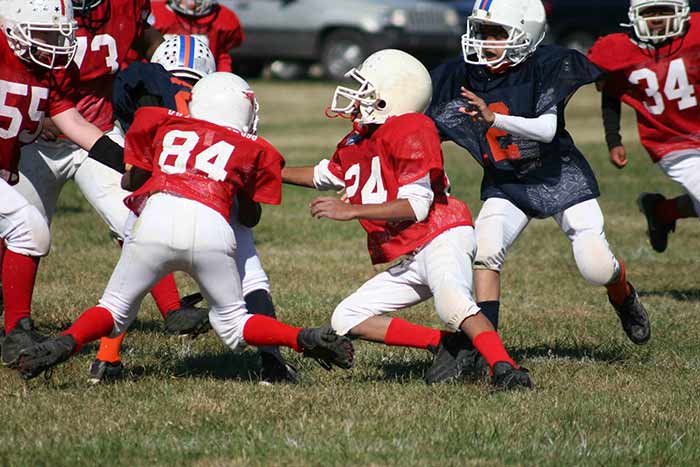
“NOCSAE is committed to providing the highest possible level of protection for youth players, and finalizing the youth football helmet standard has been a priority. Throughout the process, we worked to ensure that any steps to enhance protection for youth players are grounded in science and do not create unintended consequences. Parents and coaches can have a higher comfort level knowing the science behind the standard is tailored to the specific needs and risk exposures of this age group.”
How We Arrived Here & Current Status
Major Scientific Studies Behind the Standard
Development of the standard included two complex and coordinated scientific studies funded by NOCSAE’s Research Grant Program.
The studies were designed to address knowledge gaps identified by the NOCSAE Scientific Advisory Committee (SAC) after reviewing existing research. Previously, there were insufficient data to support youth-specific criteria for a standard. NOCSAE worked to ensure that any steps to enhance protection for youth players are grounded in scientific data and do not create new unintended risks.
Key considerations included:
- feasibility
- body proportions of youth players
The two studies reconstructed and assessed head impact biomechanics and injuries specific to youth tackle football. The studies also explored potential performance criteria for the standard, analyzing unique risk factors and impact velocities at the youth level.
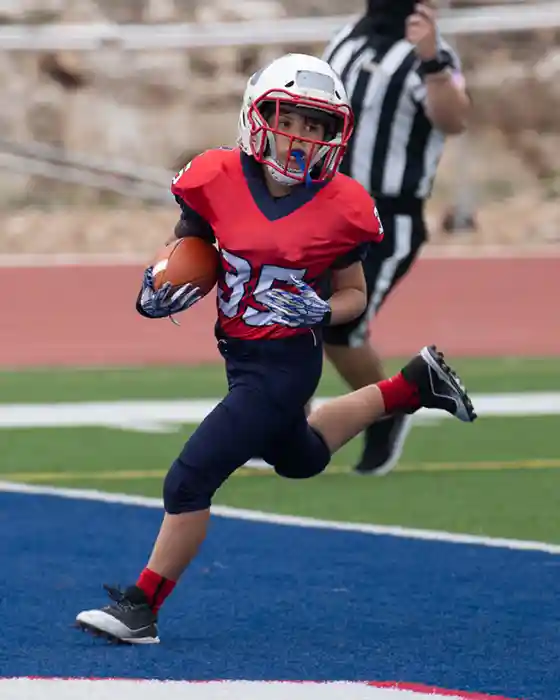
“Quantifying the Biomechanics of Concussions in Youth Football Players”
Study led by Dr. Steve Rowson, Associate Professor, Department of Biomedical Engineering and Mechanics, Virginia Tech
- Analyzed more than 6,000 head impacts among 49 youth football players ages 10-14.
- Developed data using helmet-mounted accelerometers and video from multi-camera arrays to calculate and verify player and helmet impact velocities.
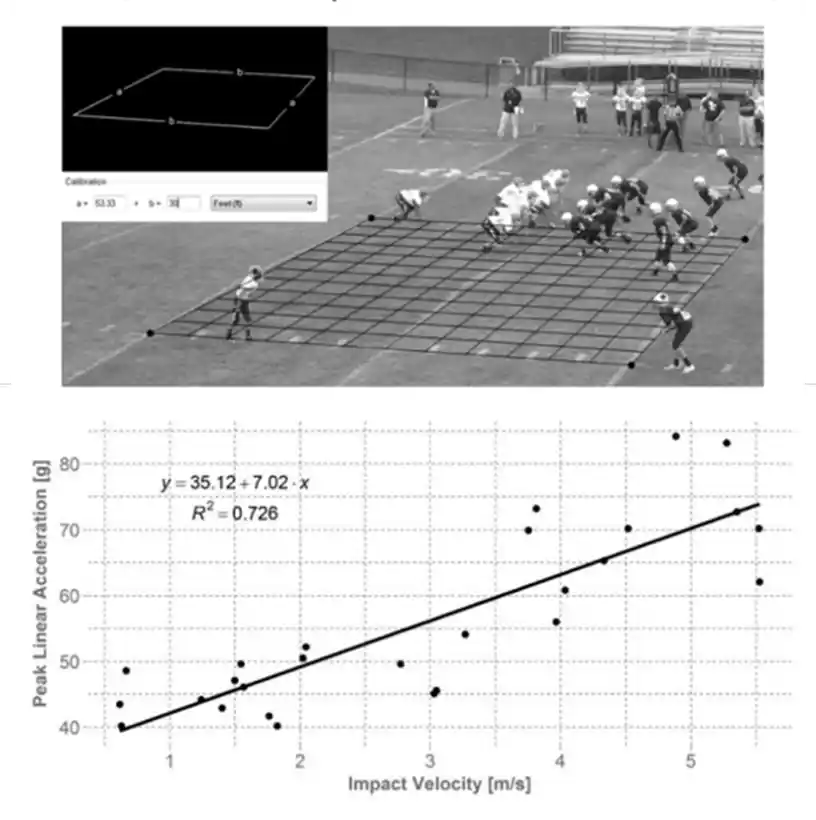
“Biomechanical Analysis of Youth Head Impacts in American Football“
Study led by Dr. Blaine Hoshizaki, Vice Dean and Professor, Director of the Neurotrauma Impact Science Laboratory, University of Ottawa
- Studied head impact events from 60 youth football games for youth players ages 5-9.
- Analyzed video of concussive and non-concussive impacts to collect impact force data needed for finite element modeling. FEM is a computational technique used to simulate and analyze the mechanical behavior of the brain and its tissues under various conditions. This allows researchers to model the physical responses of brain tissues to different forces and predict injury risk.
- Identified common injury mechanisms and impact parameters (velocity, mass, location and circumstances) and quantified head dynamic and brain tissue response.
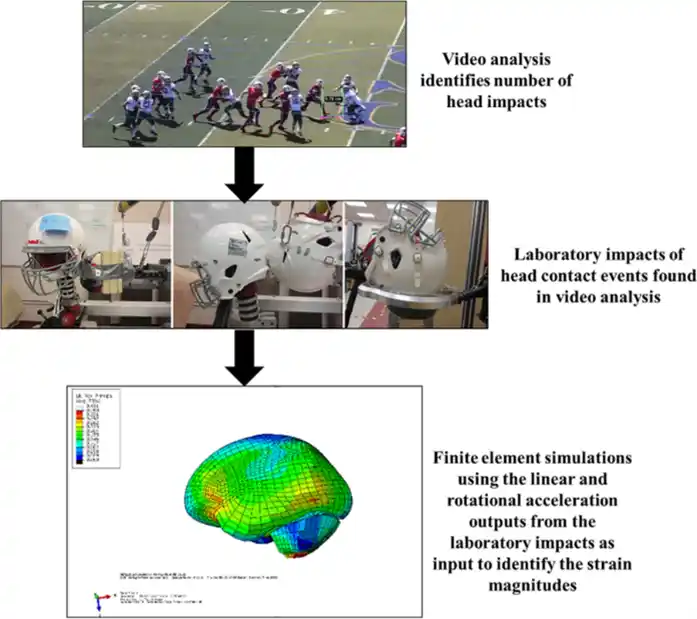
The NOCSAE Scientific Advisory Committee incorporated critical findings from other NOCSAE-funded studies, including “Head Impact Exposure of a Youth Football Team Over Eight Consecutive Seasons” published in 2021.
In parallel, the SAC reviewed more than 40 published papers from other researchers investigating injury risk and exposure in youth tackle football. These studies were complementary to NOCSAE’s own research.
The SAC made recommendations for the new standard based on all findings.
Impact and Implementation
To allow time for manufacturers to develop youth helmets that meet the standard, the NOCSAE Standards Committee set an effective date of March 1, 2027 for ND006. Manufacturers can opt to certify football helmets to the standard before the effective date.
Beyond the effective date manufacturers can no longer make youth helmet products to the prior standard (ND002).
For manufacturers that are currently making youth helmets tested to ND002, they must comply with the new standard as of the effective date.
The Safety Equipment Institute (SEI) will certify eligible youth helmets to the ND006 NOCSAE standard. This is the same process required by NOCSAE for the certification of any athletic equipment subject to our standards. As youth helmet models become certified by SEI, a complete list will be available on the SEI website.
Youth-Specific Testing Equipment
Under the standard, youth football helmets are tested on an adjusted youth-specific pneumatic ram impactor developed by NOCSAE.
The youth helmet testing protocol has more restrictive pass/fail criteria.
The standard also requires the use of the newly redesigned NOCSAE Generation III headform. NOCSAE pioneered the development of variable-mass biofidelic headforms, which accurately simulate certain biomechanic responses of a human head during impact. Over the last few years, NOCSAE has been working on an enhanced NOCSAE headform which includes improvements to biofidelity and expanded and more sophisticated data collection.
NOCSAE is directing round-robin testing conducted by A2LA accredited, independent laboratories and helmet manufacturers to ensure reliability and viability of testing parameters.
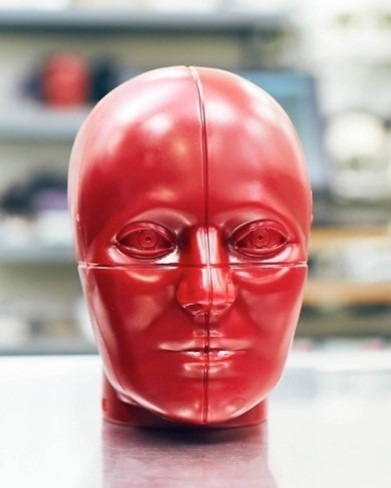
FAQs
What age group does the NOCSAE youth football helmet standard apply to?
The NOCSAE youth helmet standard is specifically designed for youth football players below high school level.
How is the youth football helmet standard different from the existing football helmet standard?
While the existing ND002 football helmet standard works well for youth players, the ND006 youth football helmet standard addresses unique risk exposures for youth football players which differ significantly from those at or above the high school level. The primary differences in exposure at the youth level are the frequency, type, location and magnitude of head impacts. All of these factors are influenced by player age, size, speed and coordination.
Will a helmet certified to the existing ND002 standard still protect my child?
The existing ND002 standard works very well for youth players.
What does the standard “effective date” mean?
To allow time for manufacturers to develop youth helmets that meet the standard, the Standards Committee set an effective date for the standard of March 1, 2027. Beyond the effective date manufacturers can no longer make youth helmet products to the prior standard (ND002).
For manufacturers that are currently making youth helmets tested to ND002, they must comply with the new standard as of the effective date.
How are youth helmets certified to the NOCSAE youth football helmet standard?
As part of NOCSAE’s rigorous quality control procedures, certification of youth helmets to the NOCSAE standard is managed by the Safety Equipment Institute (SEI). As manufacturers develop new youth football helmet products they will need to obtain certification to the NOCSAE standard through the Safety Equipment Institute. A complete list of youth helmets that meet the ND006 standard will be available at www.seinet.org.
Are there any helmets currently on the market that meet the new ND006 standard?
As of February 2025, no youth helmets have been certified to the NOCSAE youth football helmet standard. The Standards Committee set an effective date of March 1, 2027 to allow time for manufacturers to develop products that meet the standard and bring them to market. Manufacturers of youth football helmets will provide updates to the public on their youth football helmet products that meet the standard.
How do I know if my child’s league will require the new youth football helmet standard?
Consult your league or youth football organization for updates on requirements related to the NOCSAE youth football helmet standard. The standard was finalized on February 7, 2025 with an effective date of March 1, 2027. Youth football leagues and governing bodies will determine if the youth helmet standard will be required in their rules of play. But, this decision may not occur before the standard effective date of March 1, 2027.
How can I protect my child today, before to the effective date for the youth football helmet standard?
The existing NOCSAE football helmet standard (ND002) works well for youth players, as long as the helmets are correctly fitted. Maximum helmet performance depends on proper fit. The best helmet for your child is one that meets the NOCSAE standard and fits properly. A list of youth football helmets certified to the existing NOCSAE ND002 standard is available on SEI’s website.